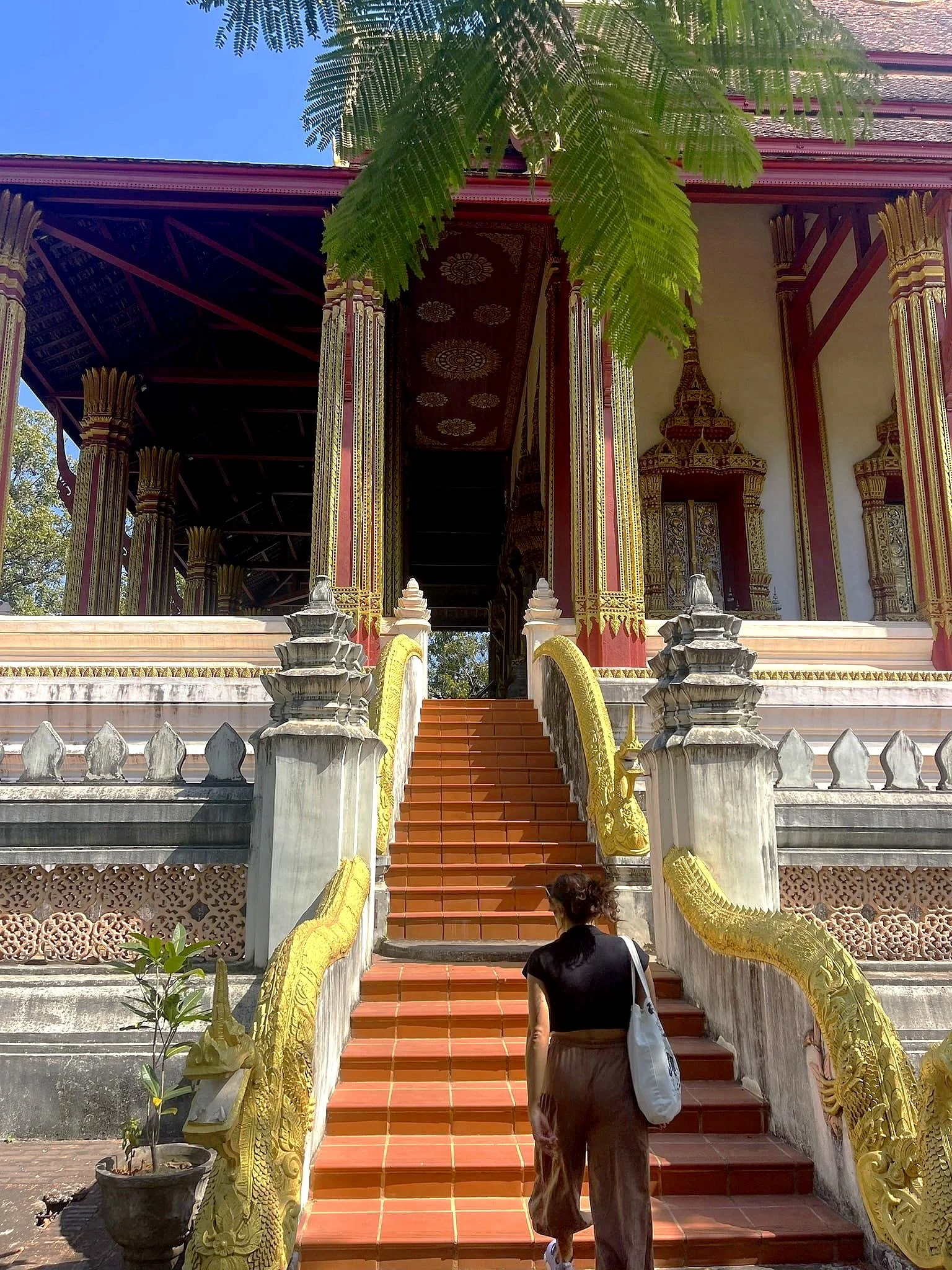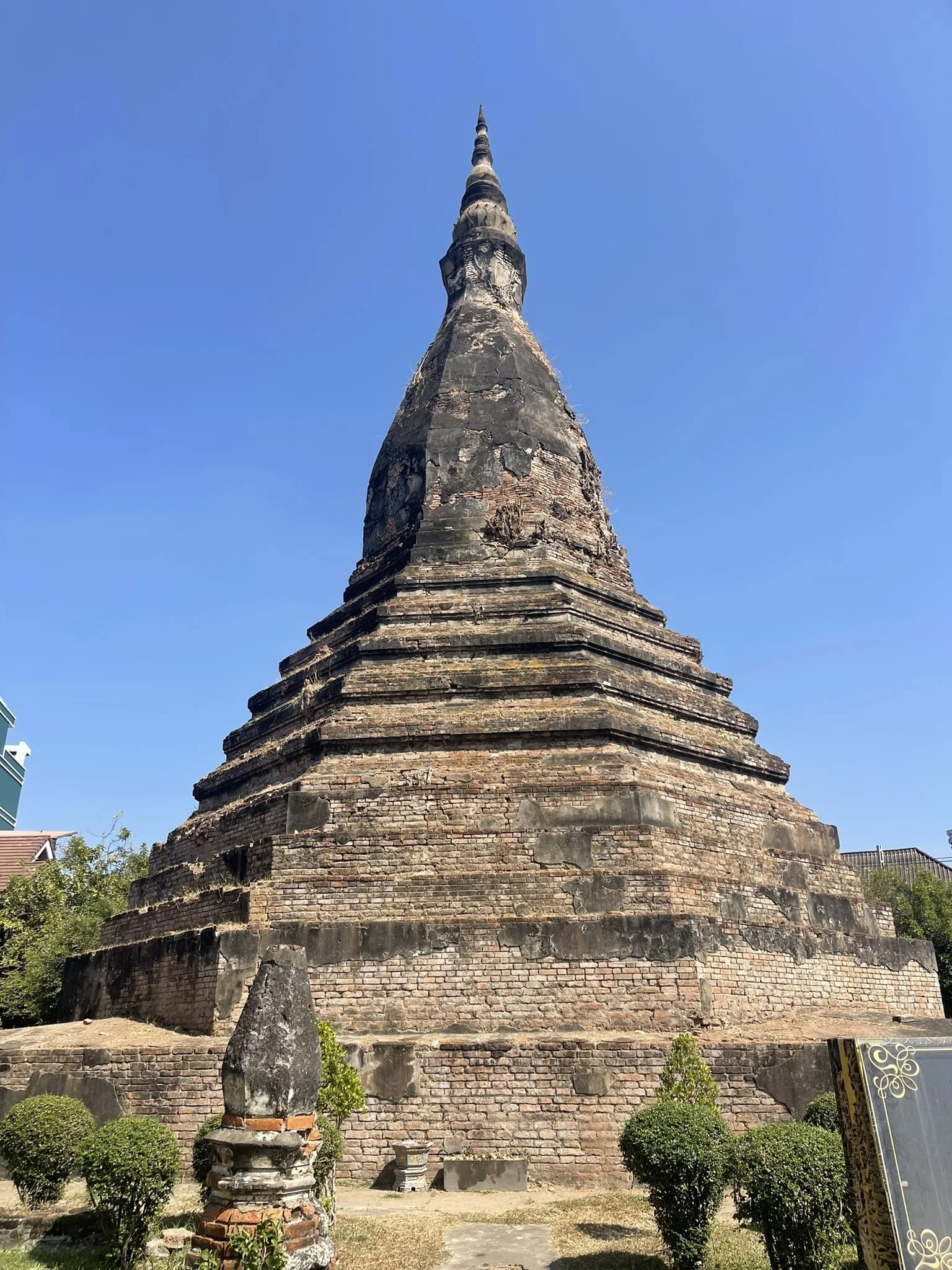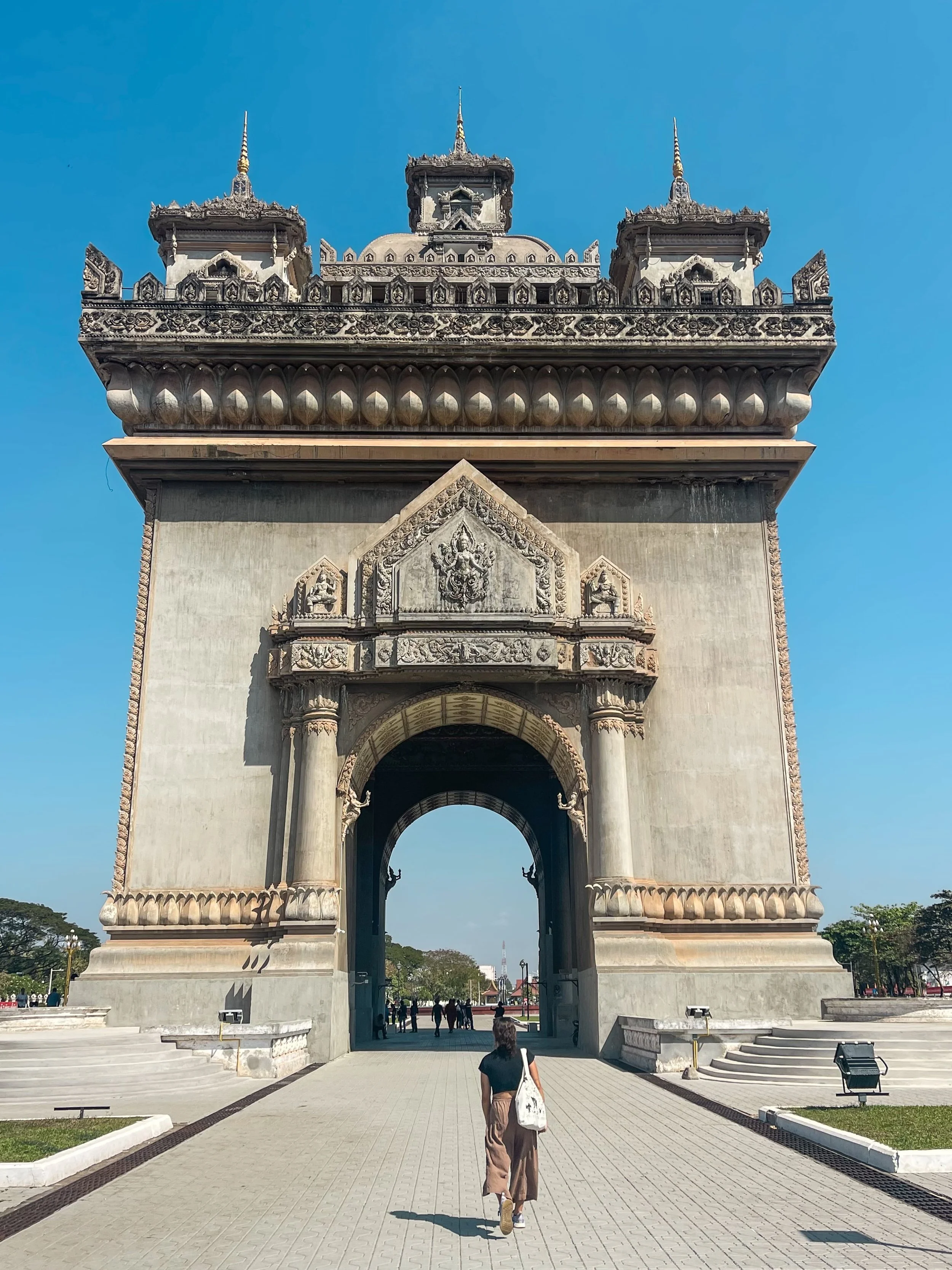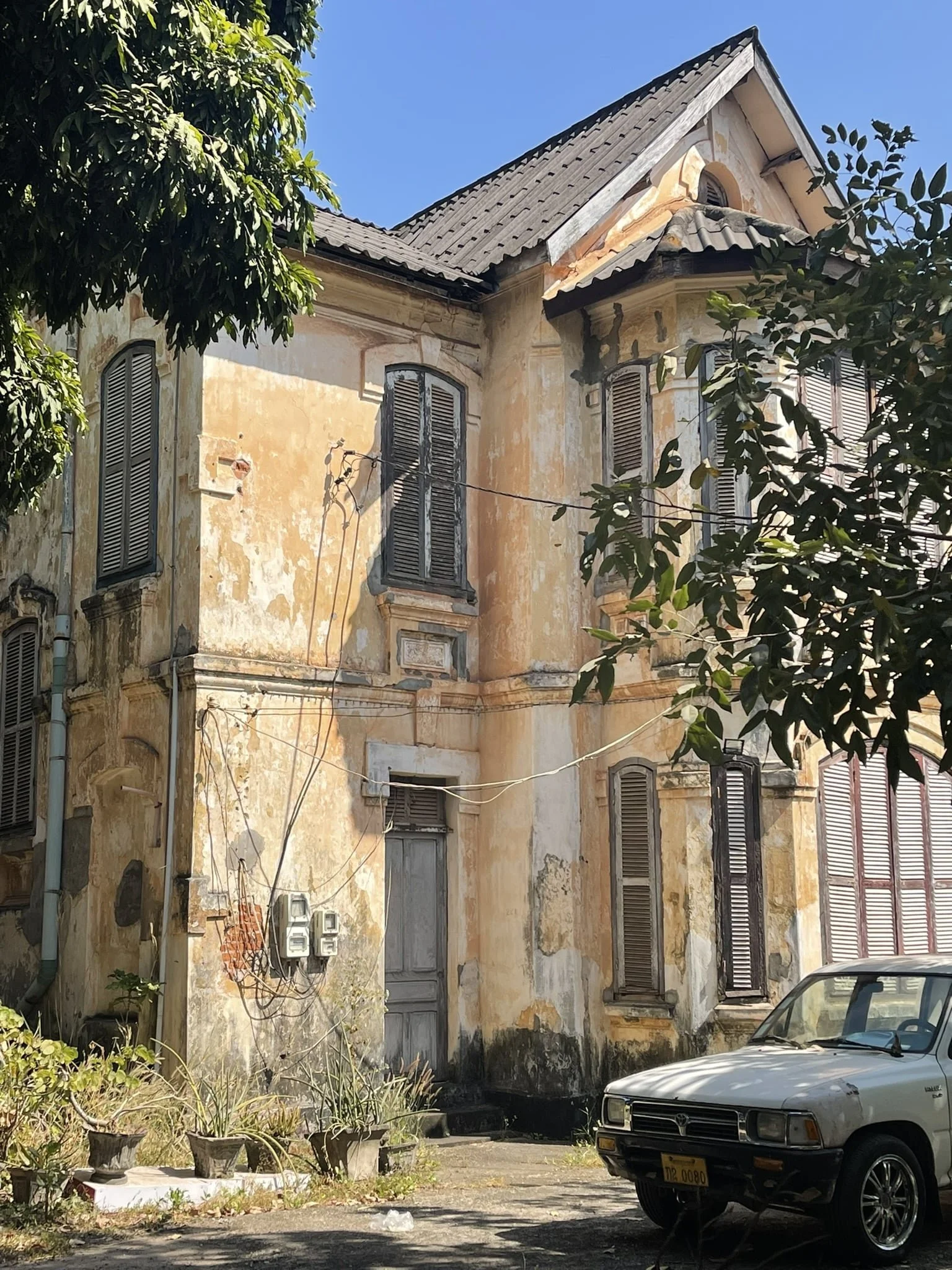One Day in Vientiane: Complete Itinerary
Welcome to Vientiane! As the national capital of Laos, this city is a must-visit during your trip to the country. Vientiane has held this status since the late 16th century after the capital was moved from Luang Prabang. Even with just one full day, you can easily explore all that Vientiane has to offer. Due to its colonial history, the city features a blend of Lao and French architecture, including colonial-era buildings and its own "Arc de Triomphe," known as the Patuxay war monument, dedicated to those who fought for independence from France. Keep reading to find out how to see it all in just one day in Vientiane!
Exploring Vientiane is best done on foot, as all its key highlights are centrally located and within walking distance of each other. Read on to discover the perfect one-day itinerary for your day in Vientiane, featuring the top sights and activities to make the most of your short visit.
Oh & as always practice sustainable tourism while traveling please :)
Disclaimer: This post contains affiliate links. If you click through and make a purchase, my blog may receive a commission at no additional cost to you.
One Day in Vientiane
The best Vientiane Walking Route…
As mentioned, Vientiane is an extremely walkable city, making it easy to get around. I have created the perfect walking path to capture all the capital’s highlights most efficiently. You can, of course, choose to travel the path by bicycle, motorbike, or taxi, but I recommend going on foot to fully take in your surroundings. Click on the top right corner of the map below to enlarge it (the white frame).
Don’t forget to download an eSIM with Airalo, so you do not get lost navigating your way.
Pro Tip: During this one-day in Vientiane itinerary, you will be visiting temples and national landmarks that require modest clothing. Be sure to have your knees, shoulders, and midsection covered.
Stop A: Chao Anouvong Park
At Chao Anouvong Park, you will find the statue of the brave King Anouvong surrounded by smaller, interesting figurines. The statue faces the Mekong River and was placed there in 2010 to honor the last monarch of the Kingdom of Vientiane. King Anouvong is renowned as one of the bravest kings in Laos.
Stop B: The Presidential Palace
The Presidential Palace is a beautifully crafted residence, serving as the official home of the King of Laos. During your one day in Vientiane, you can get a glimpse inside the palace grounds from the front and continue walking around the perimeter to see the palace in its entirety.
Stop C, D, and F: The Temples
Ho Phra Keo Museum
A captivating blend of history and elegance, it houses a remarkable collection of Buddhist artifacts within its intricately adorned walls. Once a royal temple, it now stands as a testament to Laos' rich cultural heritage and architectural finesse. Entrance to this museum costs around 30,000 Kip (a little over $1.40 USD).
Wat Si Muang
Constructed in the mid-1500s, this Khmer Temple holds an interesting legend about a woman who sacrificed herself to ward off angry spirits by throwing herself into the foundation hole, where she was crushed by the central pillar. Admission to this temple is free.
Wat Sisaket
As the oldest standing temple in Vientiane, Wat Sisaket stands as a testament to Lao architecture and Buddhist artistry. Renowned for its thousands of Buddha statues arranged within its walls, the temple charges an entrance fee of 30,000 Kip.
Stop E: Cope Visitor Centre
During the Vietnam War, Laos served as a battleground for conflicts between the USA and North Vietnam. Over nearly a decade, more than 270 million cluster bomblets were scattered across Laos, many of which remain unexploded to this day. This ongoing threat poses a daily danger to Laotians, with many still being injured or killed by these dormant bombs.
The Cope Visitor Center tells the story of the Laotian experience during the Vietnam War and the enduring impacts it has on their lives today. The center displays numerous artifacts, including prosthetics and "bombies," along with short documentaries that shed light on this tragic legacy.
Entry to the museum is free, with donations accepted. Visiting the Cope Visitor Center is a must when in Laos. While the experience may be saddening, it is an essential step during your one day in Vientiane to gain a true appreciation and understanding of Laos as a country before embarking on further exploration.
Stop G: That Dam Stupa
This iconic black stupa symbolizes a tangible link to the city’s past and embodies the spirit of Laos, representing resilience and endurance in the face of historical adversity. Viewed as a silent sentinel guarding the city, it holds significant cultural importance.
Stop H: Patuxay-Victory Monument
This is a must-see during your one day in Vientiane! Arguably the most iconic monument in Vientiane, this historical landmark commemorates the country’s struggle for independence from France. Resembling the Arc de Triomphe in Paris, it stands as a Laotian symbol of national pride and resilience. You can pay an entrance fee of 30,000 Kip to climb to the top, where each level holds information and history about Laos culture. I also recommend passing by this monument at night to see it all lit up.
Stop I: Pha That Luang
This Buddhist stupa is a 35-minute walk from the Victory Monument and is regarded as the national symbol of Laos with religious significance. Its golden spire rises proudly above the city, attracting visitors to admire its architectural grandeur and spiritual aura. To enter inside, you must pay 5,000 Kip and be modestly covered (longer skirts are available to rent to cover your knees).
Near Stop A: Watch the Sunset over the Mekong River
As your one day in Vientiane comes to a close, head over to the Mekong Riverfront to take in a beautiful sunset over the river. I also recommend bringing some snacks, drinks, and a blanket to sit comfortably on. My go-to is coconut water and some cashews.
Final Stop: Night Market
What would a trip to Asia be without making a stop at the Night Market? Located along the Mekong Riverfront, this market offers cheap clothing items, crafts, and electronics. There are very few food options here, so I recommend grabbing a bite to eat before heading here. The market runs from 6:00 to 10:00 at night, making it the perfect conclusion to your one day in Vientiane.
A cute little painted house I found wandering about and another view of the Victory Monument
Staying a Second Day?
If you find yourself with an extra day in Vientiane, consider visiting the Buddha Park, Wat Xieng Khouane Luang. Located outside the city center, you can book a tour, take bus #14 for 18,000 Kip, hire a tuk-tuk, or rent a motorbike to get there. The travel time is anywhere from 40 minutes to 1 hour. With an entrance fee of just under $2 USD (40,000 Kip), you can easily spend 1-3 hours here, depending on your interest. I recommend going earlier to avoid large crowds. Remember to dress modestly, this is viewed as a holy site by locals.
A Little History: The park was created by Luang Pu Bunleua Sulilat in the late 1950s to early 1960s. Sulilat, a Lao religious leader, aimed to create a space where people of all backgrounds could come to contemplate Buddhism and Hinduism. The park contains over 200 sculptures depicting various mythological figures, deities, and scenes from Buddhist and Hindu creation, making it a fascinating fusion of religious art and ideology.
General Information: Vientiane
Where to Stay:
I recommend staying in Watchan, Ban Haysoke, or Ban Anou. Each of these areas is centrally located, making it easy to access food, hotels, and all of the top places to explore.
Best Accommodation Options For Every Traveler
Best Backpacker/Hostel Option: Dream Home Hostel
Best Low-Budget: Sinakhone Vientiane Hotel
Best Mid-Budget: New Champa Boutique Hotel or Chanthapanya Hotel
Best Luxury: Lao Poet Hotel
You can also find hotel deals at Agoda and Hostel World! You can help support my travel blog by clicking and booking through the links!
Best Time to Visit:
November - March
Rainy Season: May - September
Dry Season: November - April
How Many Days to Explore:
1-2 days should suffice. I found that there was not too much to do here and that 1-2 days were enough to get the vibe of the city.
How to Get to Vientiane:
I recommend either taking a flight, a bus, or a train right into Vientiane.
Fly: You can fly directly from Vietnam, Thailand, Malaysia, China, and Cambodia depending on where you are coming from. The Wattay International Airport is 5 km from the city center. You can either grab a taxi or hop on bus # 44 from the airport. To book flights, I suggest looking on Kiwi.com or Skyscanner.com for the best flight deals. Unlike Google Flights, Kiwi and Skyscanner include regional flights in their search results.
Bus: The bus is another option, but it can, of course, take much more time and be quite uncomfortable. Buses usually cost $20-$30 (USD) from Hanoi, Vietnam, and take around 20 hours, to give you some perspective. I have taken the sleeper bus before and was fine because I am only 5 foot 1 (barely). My boyfriend is around 6 feet and found it a bit too cramped but bearable for shorter journeys.
Train: Already in Laos? The Laos-China railway is an excellent option for simple travel throughout Laos and was my mode of transport between places. For more information on schedules and pricing click here! We took the train and it was a great experience – super easy, safe, and comfy. It only takes a couple of hours to move between places.
How to Get Around:
I do believe walking is the best form of “transportation” here. However, you can also rent a motorbike or take taxis as well.
Vegan Food Recommendations:
Coco & Co - My Favorite Vegan Spot
Suzette - French Restaurant and Cafe
Annabelle - Vegan Bakery and Breakfast Spot
Senglao Cafe - Vintage Cinema
















